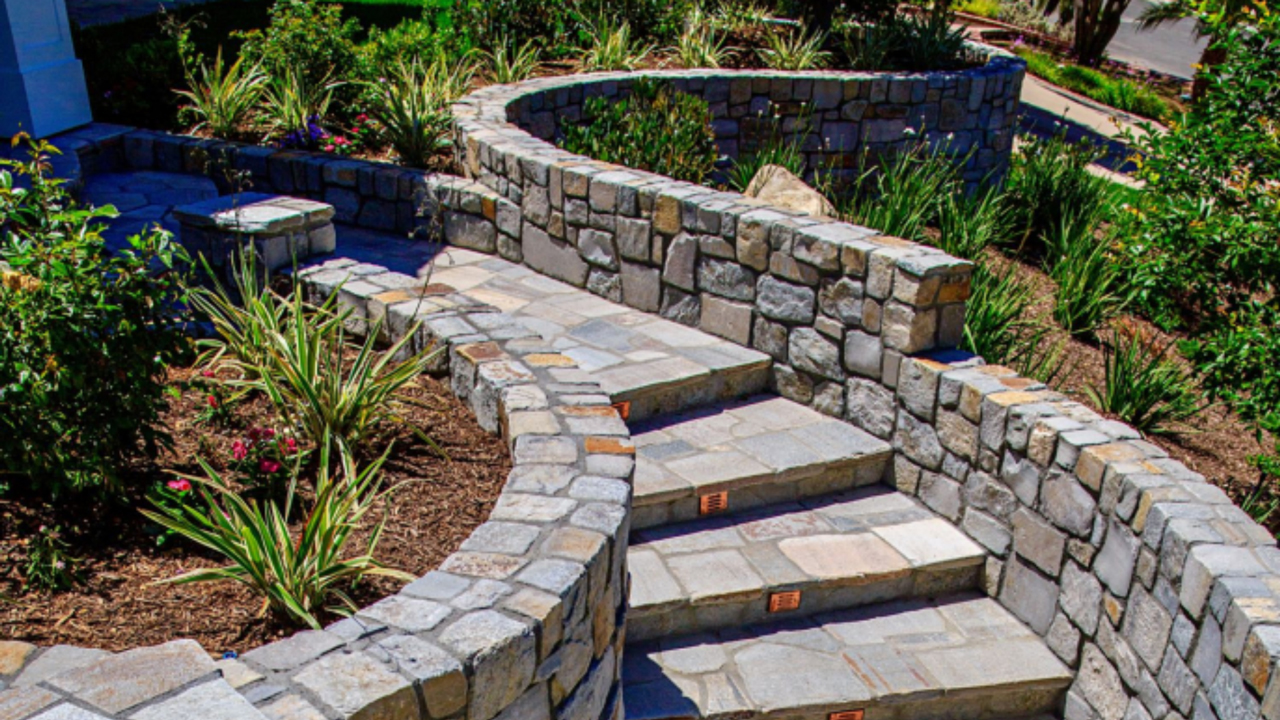
Retaining wallsRetaining walls are structures designed to hold back soil and prevent erosion in landscapes with var... are a fundamental component of hardscape construction and landscaping projects, expertly designed and installed by a trusted hardscape contractor. They serve as both structural and aesthetic elements, preventing soil erosion and creating usable spaces on uneven terrain.
However, their effectiveness and durability hinge on one critical factor—proper drainage. Without it, retaining walls can become vulnerable to hydrostatic pressure, leading to water accumulation, structural damage, and costly repairs.
In this comprehensive guide, we'll delve into the intricacies of retaining wall drainageRetaining wall drainage is a crucial process in the construction of retaining walls, designed to pre.... We'll explore why it's essential, the components that make up an effective drainage system, and the factors you should consider when choosing an outlet for your retaining wall drain.
Whether you're a seasoned DIY enthusiast or considering professional assistance, understanding these aspects is vital for ensuring the longevity and safety of your retaining wall.
Retaining walls often find themselves in the path of hydrostatic pressure, the force exerted by excess water in the soil.
When water accumulates behind a retaining wall due to inadequate drainage, it can become a powerful force. The pressure it exerts can compromise the structural integrity of the wall, leading to a range of problems, including bulging, cracking, or even catastrophic failure.
Preventing water accumulation behind a retaining wall requires more than just good intentions—it demands expertise in hardscape construction.
This is where a seasoned hardscape contractor steps in. Specializing in retaining walls, these professionals understand the intricacies of drainage and the structural demands of these critical landscape elements.
When you enlist the services of a hardscape contractor, you're ensuring that your retaining wall is designed with the knowledge and experience needed to withstand hydrostatic pressure and the test of time.
To mitigate the risks posed by hydrostatic pressure, a robust drainage system is indispensable. At the heart of this system lies the drainage pipe installed at the base of the retaining wall. This perforated pipe serves a crucial role in safeguarding the wall from excess moisture. However, it's essential to follow best practices during installation.
The drainage pipe should be perforated to allow water to enter from all sides. To prevent soil particles from clogging these holes, it's wrapped in geotextile fabric. Proper sloping of the pipe away from the wall ensures effective water transport.
The pipe extends to a point where water can safely drain away from the wall, mitigating the risk of hydrostatic pressure.
While the drainage pipe plays a pivotal role, backfill material is equally critical. BackfillingBackfilling is the process of refilling an excavated area with soil, gravel, or other materials afte... the area behind the wall with permeable materials such as gravelGravel consists of small, loose, rounded or angular stones, typically ranging in size from a few mil... or crushed stoneCrushed stone is a form of aggregate composed of rocks that have been broken down into small, angula... is essential. These materials facilitate water movement and reduce the risk of water accumulation.
Incorporating weep holes in the wall is another smart move. These small openings allow water to escape, further relieving pressure and ensuring that moisture doesn't become trapped behind the wall.
No drainage system can function effectively without regular inspection and maintenance. Ensuring that the drainage system remains free of debris and blockages is essential. If you notice any issues, address them promptly to prevent potential damage.
Selecting the appropriate outlet for the drainage system is equally important. The outlet serves as the point where the water from the drain is released. Here are some common options:
A dry well is a deep hole in the ground filled with gravel or crushed stone. It is designed to collect and filter stormwater runoff. This is an effective solution for managing excess water and preventing it from accumulating behind the retaining wall.
If there's a storm sewer system nearby, it can be a viable outlet for your retaining wall drain. Connecting to a storm sewer system can efficiently transport water away from your property, reducing the risk of water damage.
In some cases, you might have a natural water feature like a creek or pond nearby. If local regulations permit, you can direct the retaining wall drain outlet to such a feature. However, it's crucial to check local regulations to ensure compliance.
When choosing an outlet for your retaining wall drain, several factors come into play:
Preventing water accumulation behind your retaining wall is vital for its durability and your property's safety. Trust West Hills Masonry, your experienced hardscape contractor, to implement effective drainage solutions that safeguard your investment.
Our expert team specializes in retaining wall design and drainage systems, ensuring that your outdoor space remains beautiful, functional, and protected from water-related issues. Don't leave your retaining wall's performance to chance–consult us today.
Contact us at 714-519-5009 at West Hills Masonry now to transform your retaining wall into a long-lasting asset. With our guidance and expertise, you can enjoy a stunning outdoor space that stands the test of time. Don't wait; secure your retaining wall's future today!
 Carlos Gonzales
Carlos GonzalesLocations We Serve
Schedule A Consultation